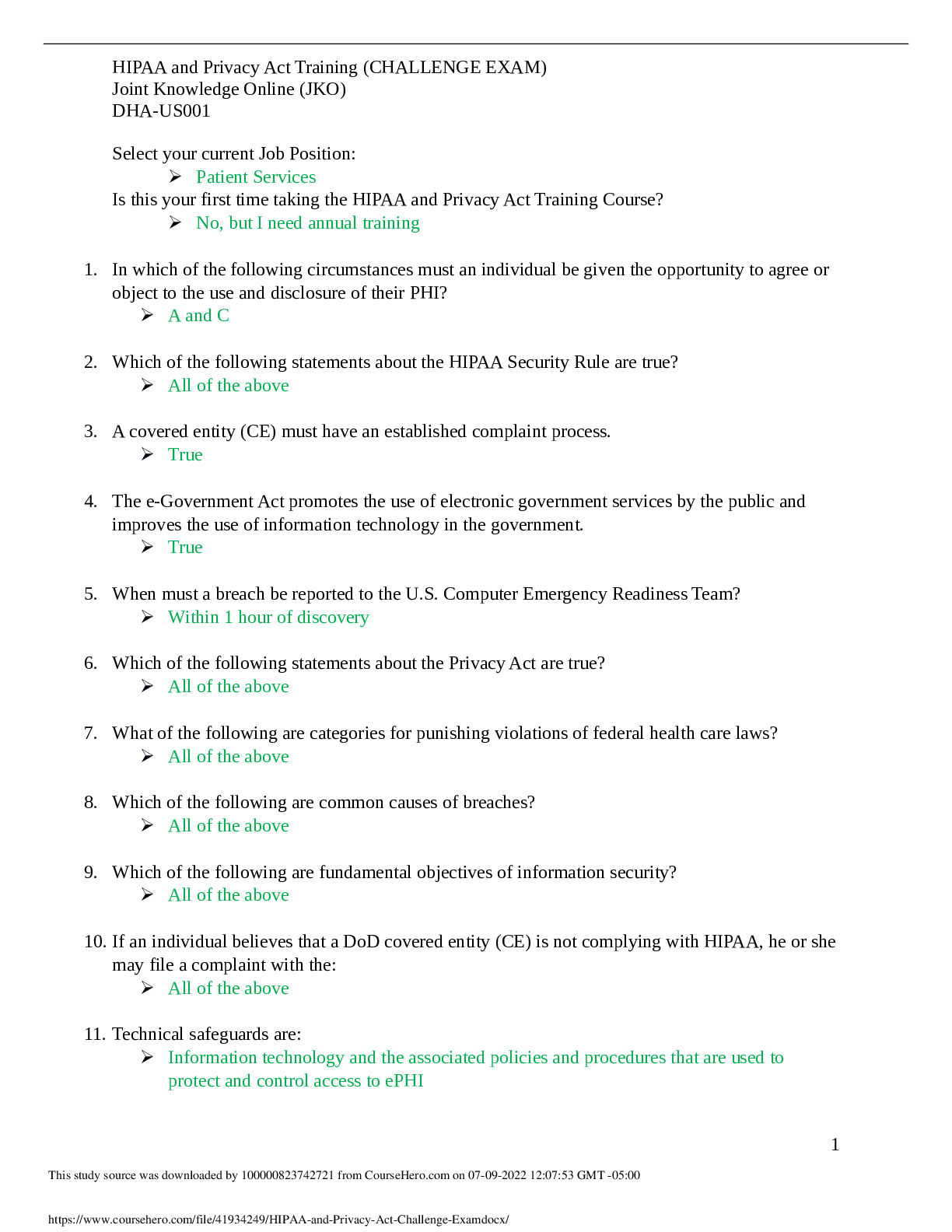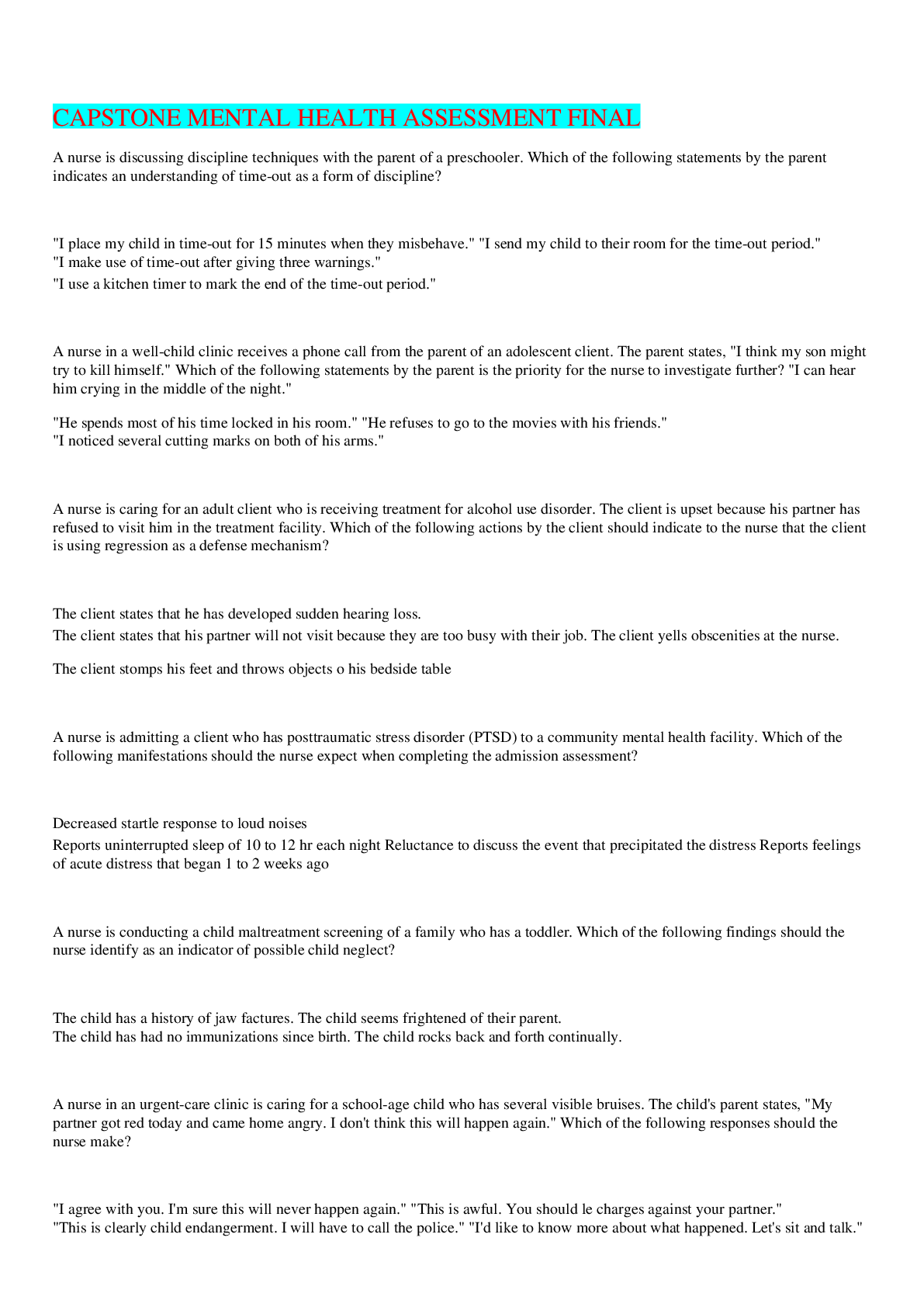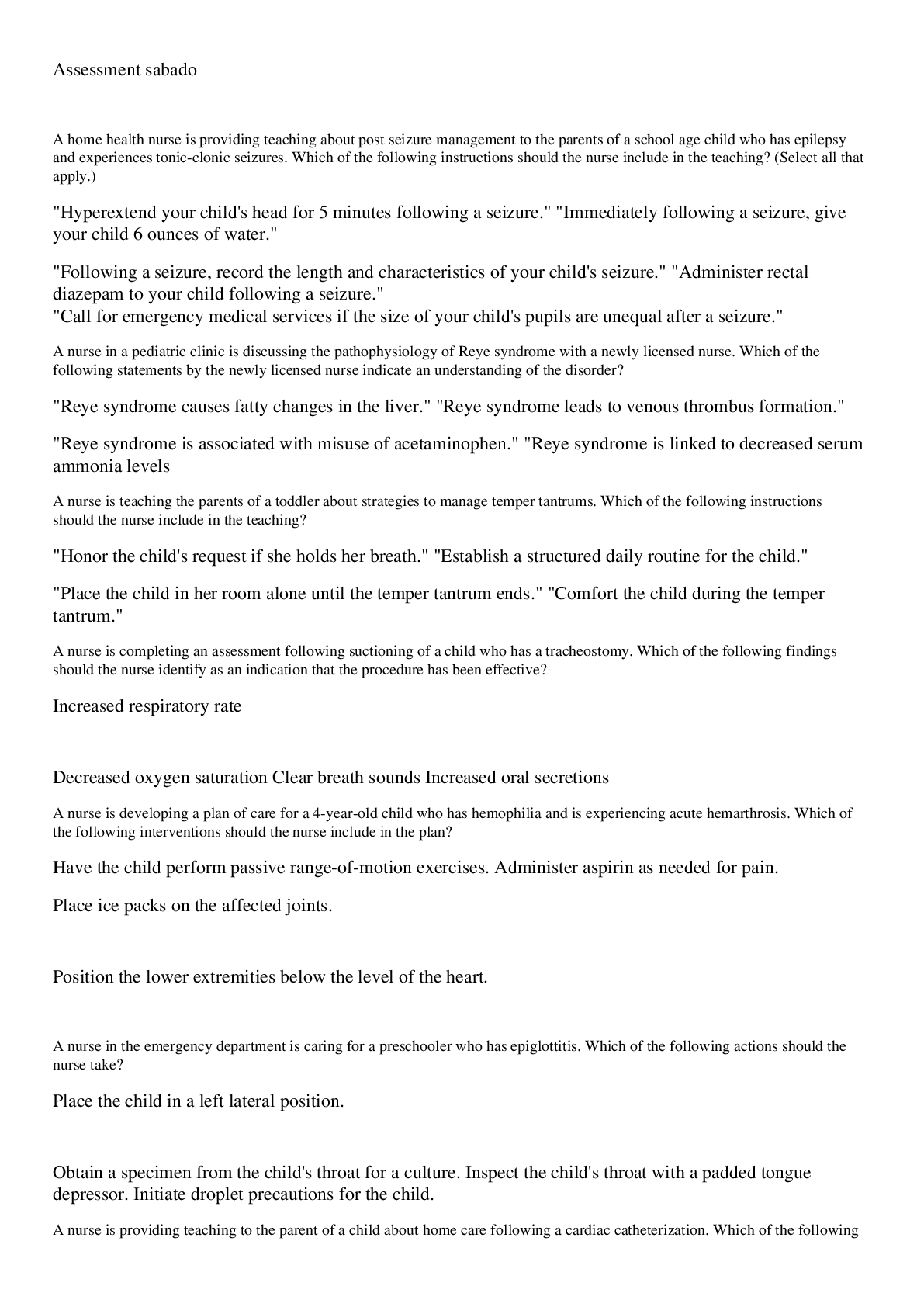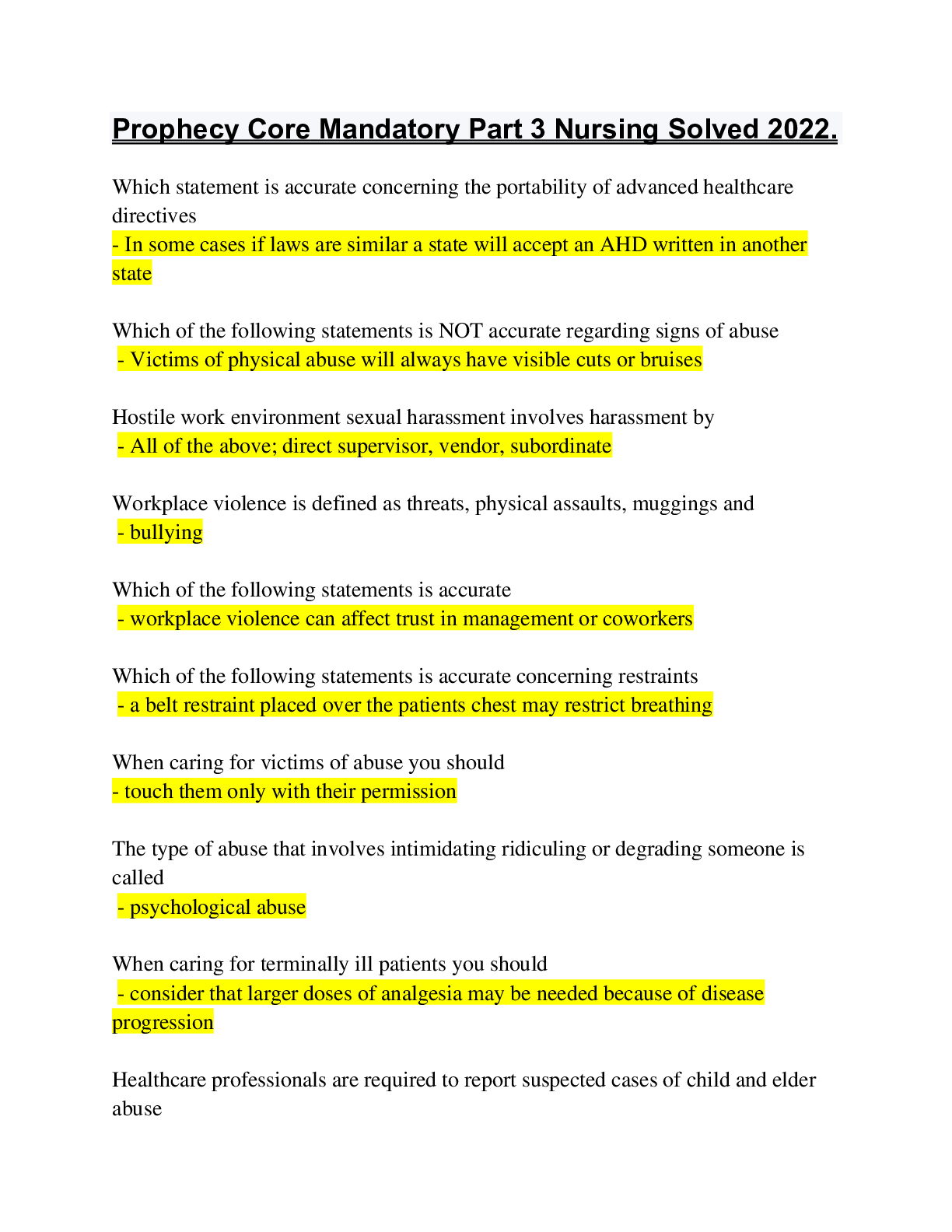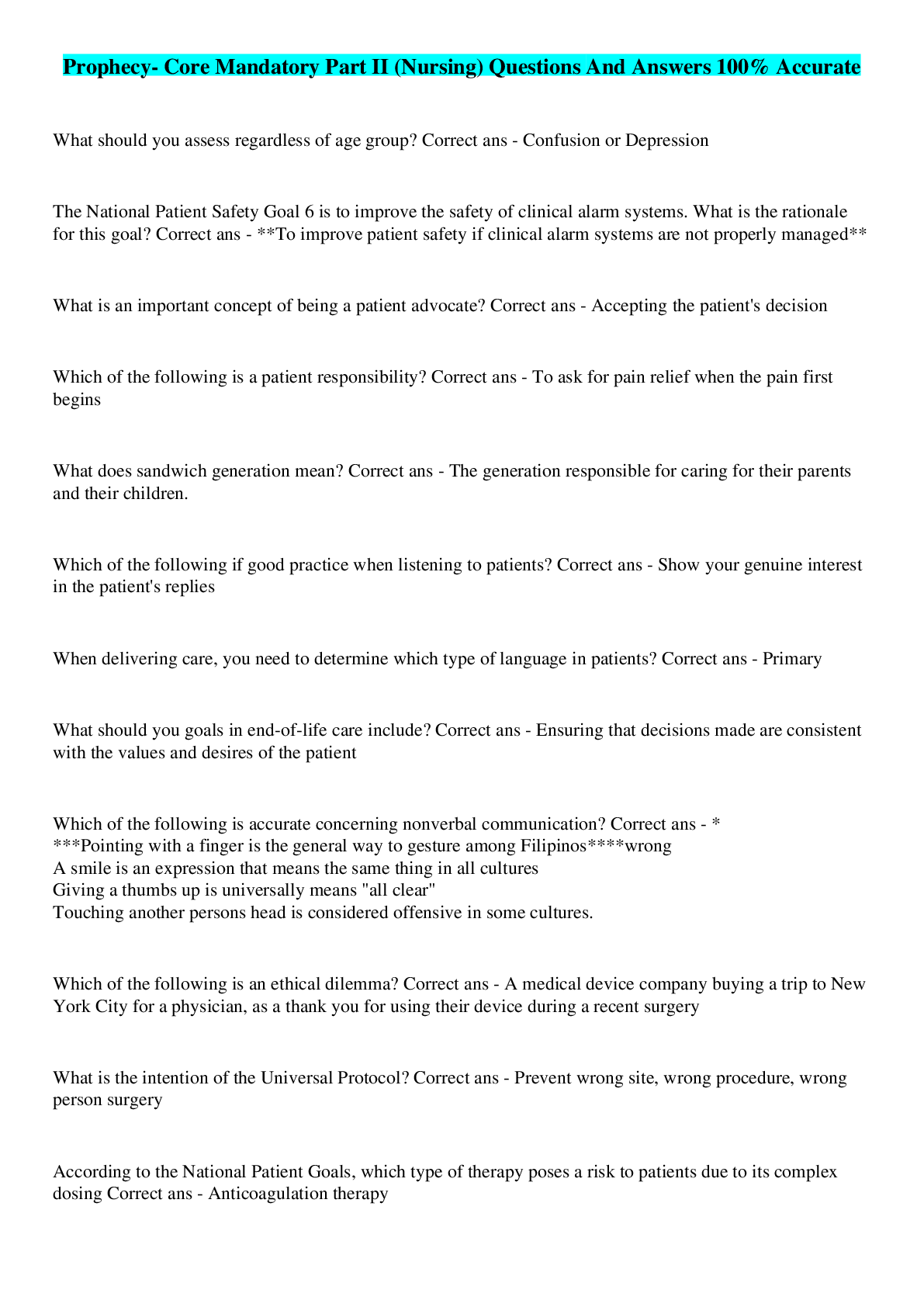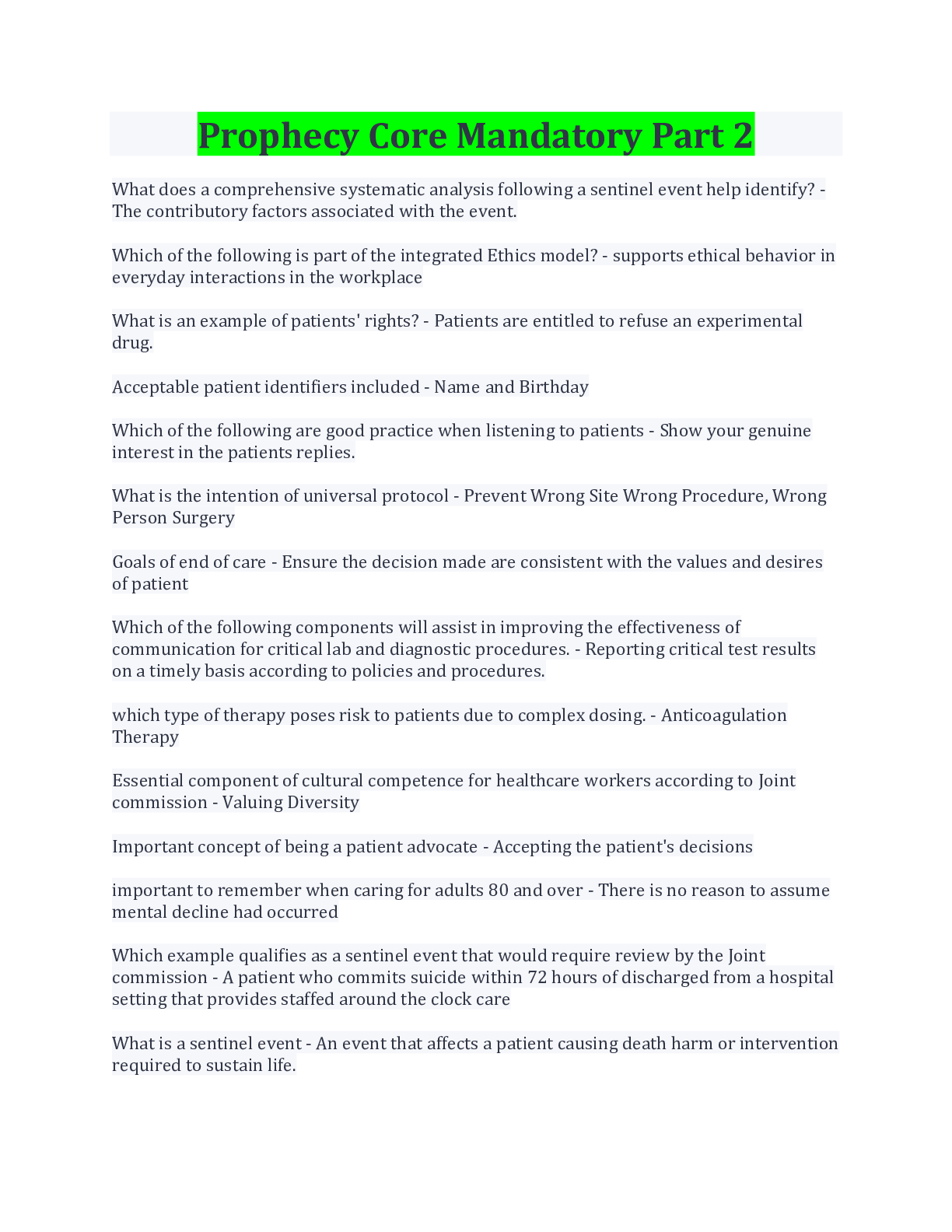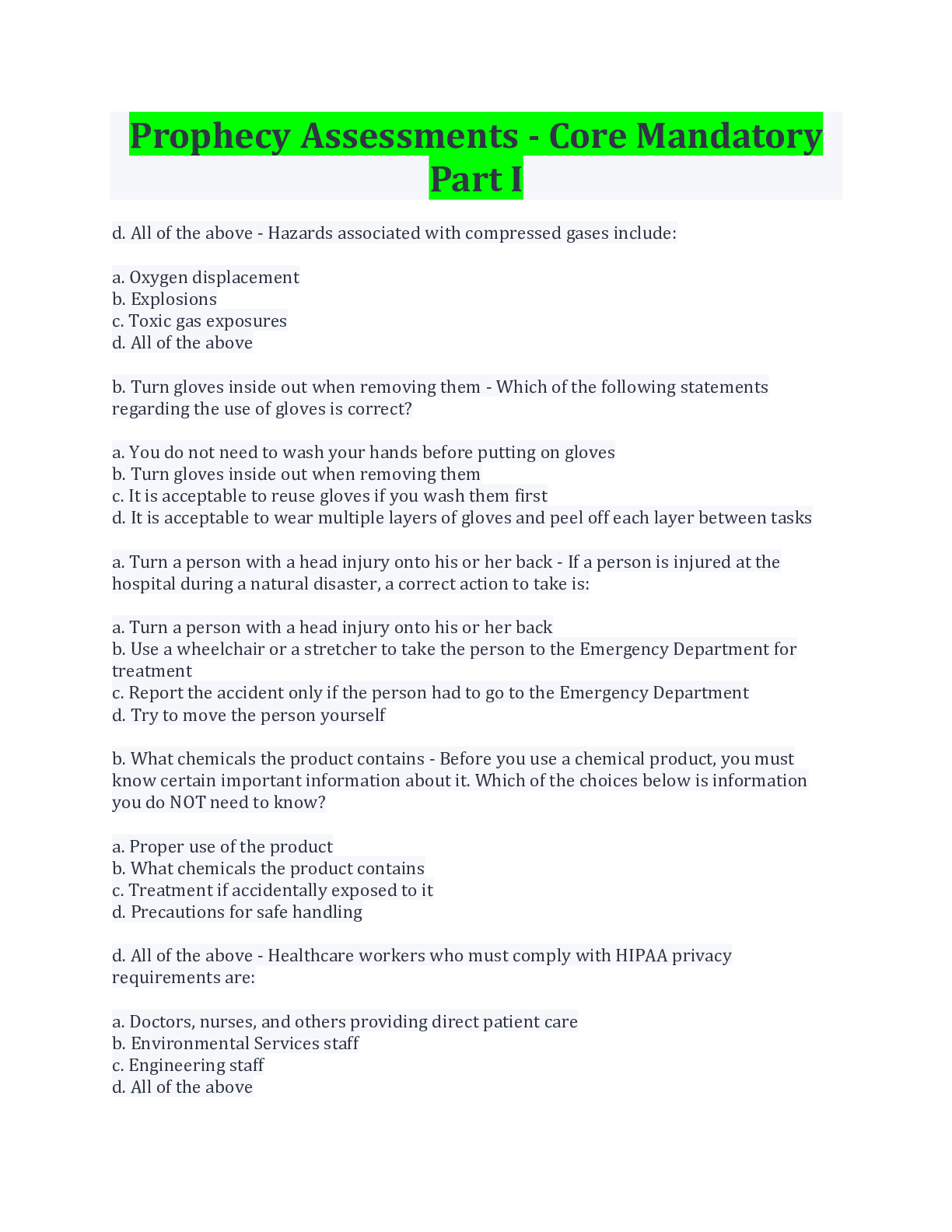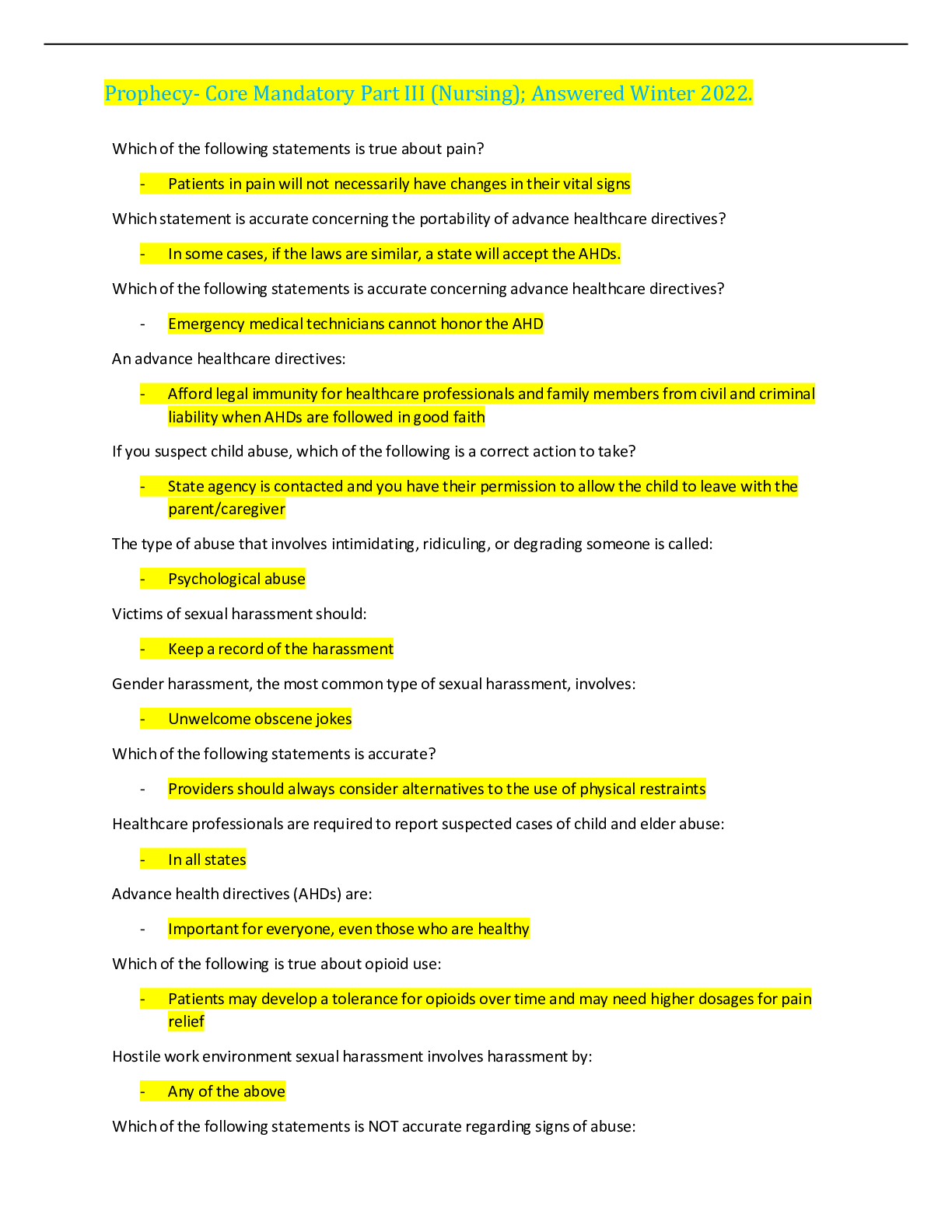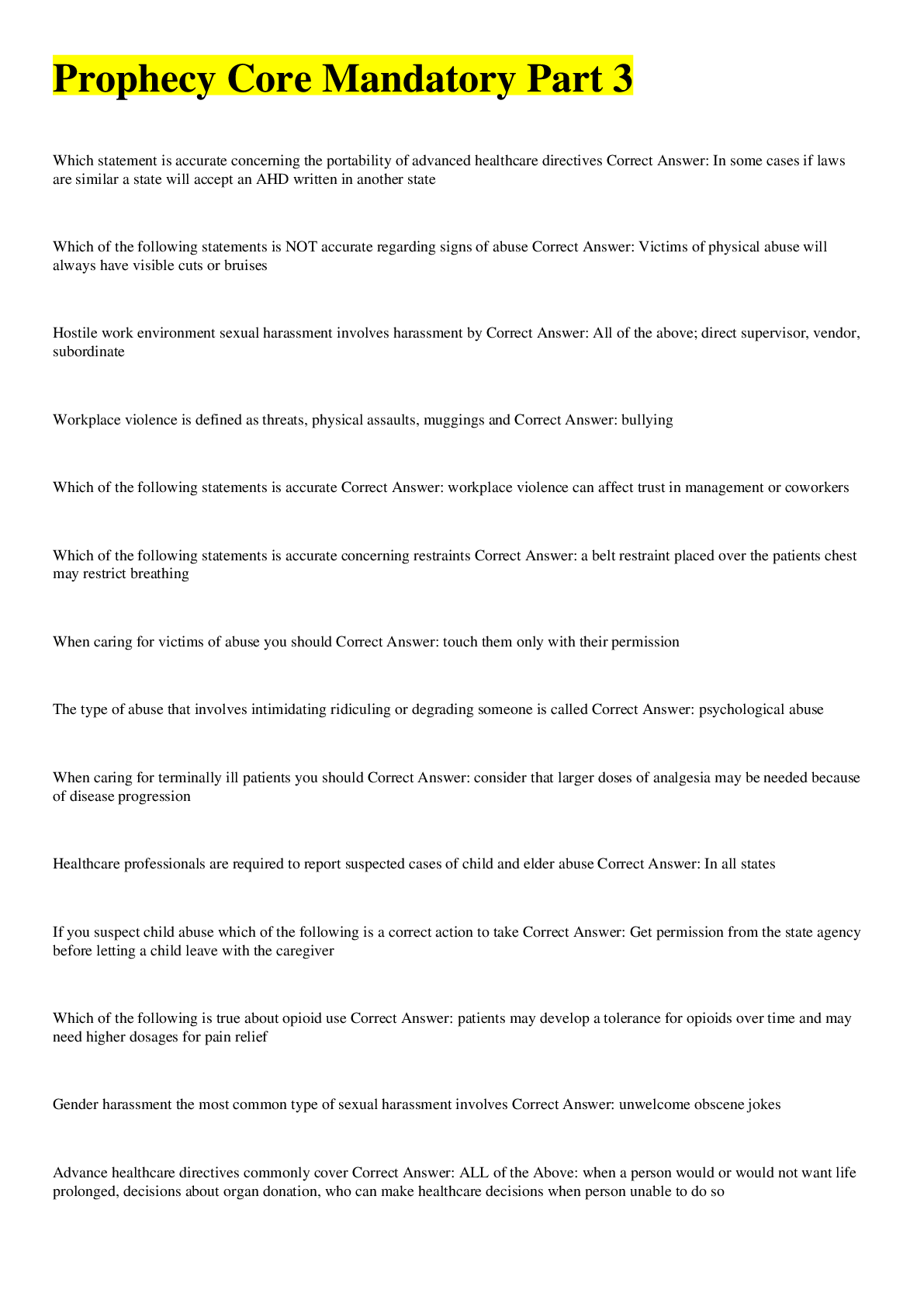*NURSING > EXAM > (answered)Prophecy Assessments - Core Mandatory Part I / Prophecy Core Mandatory Part 1 Winter, all (All)
(answered)Prophecy Assessments - Core Mandatory Part I / Prophecy Core Mandatory Part 1 Winter, all answered 100% correct.
Document Content and Description Below
Prophecy Assessments - Core Mandatory Part I Answered 2022 - Hazards associated with compressed gases include: a. Oxygen displacement b. Explosions c. Toxic gas exposures d. All of the above - Which o... f the following statements regarding the use of gloves is correct? a. You do not need to wash your hands before putting on gloves b. Turn gloves inside out when removing them c. It is acceptable to reuse gloves if you wash them first d. It is acceptable to wear multiple layers of gloves and peel off each layer between tasks - If a person is injured at the hospital during a natural disaster, a correct action to take is: a. Turn a person with a head injury onto his or her back b. Use a wheelchair or a stretcher to take the person to the Emergency Department for treatment c. Report the accident only if the person had to go to the Emergency Department d. Try to move the person yourself - Before you use a chemical product, you must know certain important information about it. Which of the choices below is information you do NOT need to know? a. Proper use of the product b. What chemicals the product contains c. Treatment if accidentally exposed to it d. Precautions for safe handling - Healthcare workers who must comply with HIPAA privacy requirements are: a. Doctors, nurses, and others providing direct patient care b. Environmental Services staff c. Engineering staff d. All of the above - Which of the following is NOT required on a chemical label? a. A signal word b. Your facility's name c. A hazard statement d. A pictogram - The acronym P.A.S.S. is used to help remember: a. How to use a fire extinguisher b. How to evacuate patients c. How to spread the word about a fire d. None of the above - When lifting something off the ground, which part of your body should you always use? a. Back b. Abdominals c. Arms d. Legs - Which of the following statements regarding electrical safety is correct? a. Do not roll equipment over electrical cords because it can damage the cord b. It is acceptable to use a plug with a loose or broken pin as long as the device works c. Adaptors that convert three-pin plugs to two-pin plugs are safe to use d. Equipment should be unplugged by pulling the cord, not the plug - Placing a patient on Contact Precautions means that everyone must: a. Wear appropriate Personal Protective Equipment (PPE) such as gowns and gloves b. Wear a respirator c. Care for the patient in an airborne infection isolation room (AIIR) d. All of the above - When mobilizing a weak or unsteady patient, which technique(s) should you consider? a. Using a transfer belt (gait belt) b. Using a mechanical lift, roller board, sliding board, flexible patient mover, or sling c. Having an assistant help you d. All of the above - Which of the following would be considered an internal disaster rather than an external one? a. Earthquake b. Hurricane c. Flood d. Bomb threat - In the event of an earthquake, which of the following should never be done? a. Moving all patients to a central area b. Closing all curtains and shades in the central area c. Closing all doors to the central area d. Using candles for illumination - When working with or near radiation, which of the following statements is incorrect? a. If you cannot locate your badge monitor, you should borrow one from your co-worker b. A 0.5-mm thick lead apron reduces scattered radiation by approximately 10 times c. Doubling the distance between a person and the radiation source reduces the radiation exposure by a factor of 4 d. Before you attempt a procedure, think ahead how you will accomplish it - When moving a patient from bed to wheelchair, which technique should you avoid at all times? a. Bending at your knees to lower the patient to the chair b. Having the patient hold onto your neck or shoulders c. Placing yourself in front of the patient and blocking the patient's leg closest to the chair with your foot and leg d. Positioning the wheelchair at a slight angle close to the bed - If patients need to be evacuated, it should be in this order: a. Ambulatory patients, then wheelchair patients, then bedfast patients b. Whichever patients you can get to first c. Ambulatory patients, then bedfast patients, then wheelchair patients d. Bedfast patients, then wheelchair patients, then ambulatory patients - Under the Safe Medical Devices Act, your responsibility as a healthcare worker is to: a. Return the device to the company vendor b. [Show More]
Last updated: 1 year ago
Preview 1 out of 7 pages

Reviews( 1 )

by johny · 1 year ago
Document information
Connected school, study & course
About the document
Uploaded On
Jun 17, 2022
Number of pages
7
Written in
Additional information
This document has been written for:
Uploaded
Jun 17, 2022
Downloads
2
Views
206
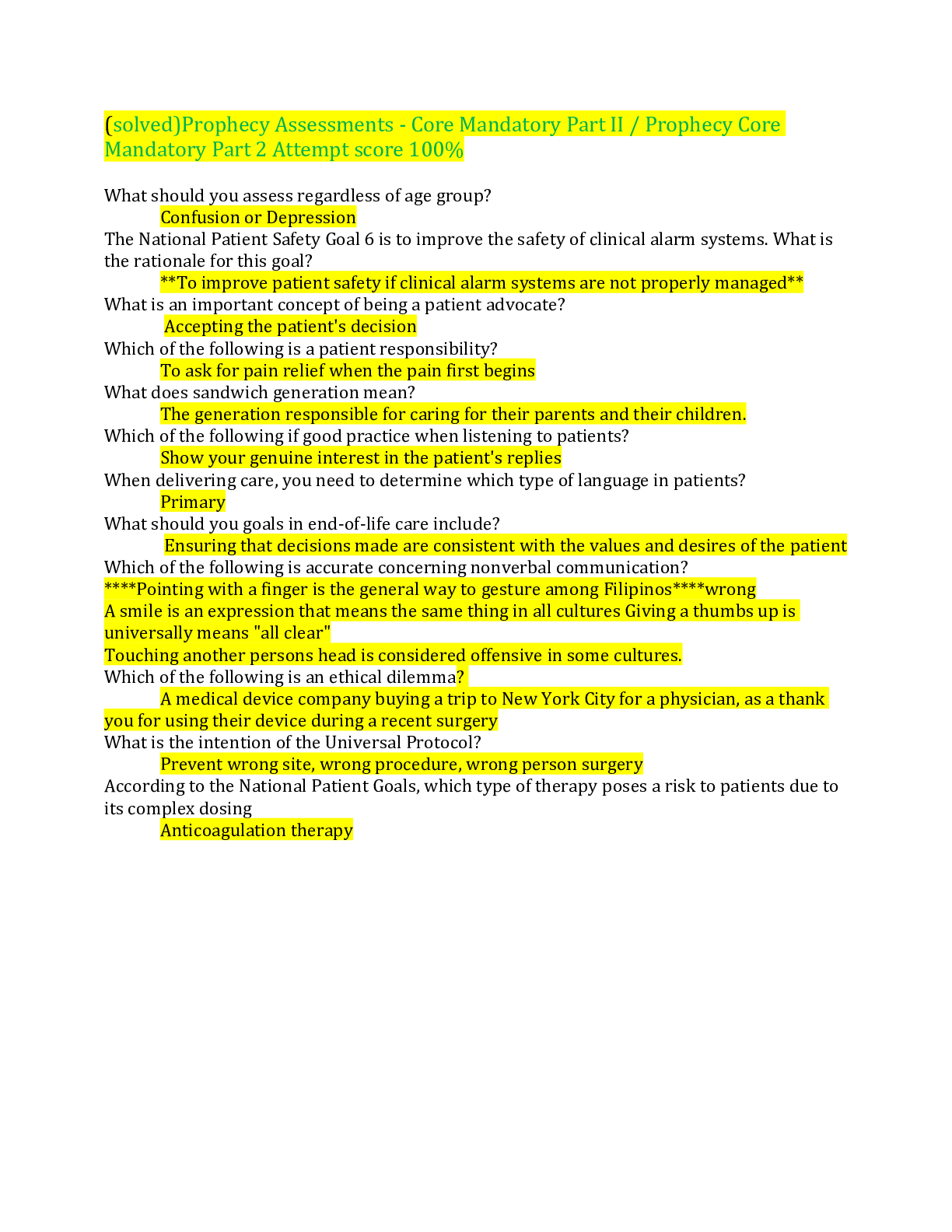

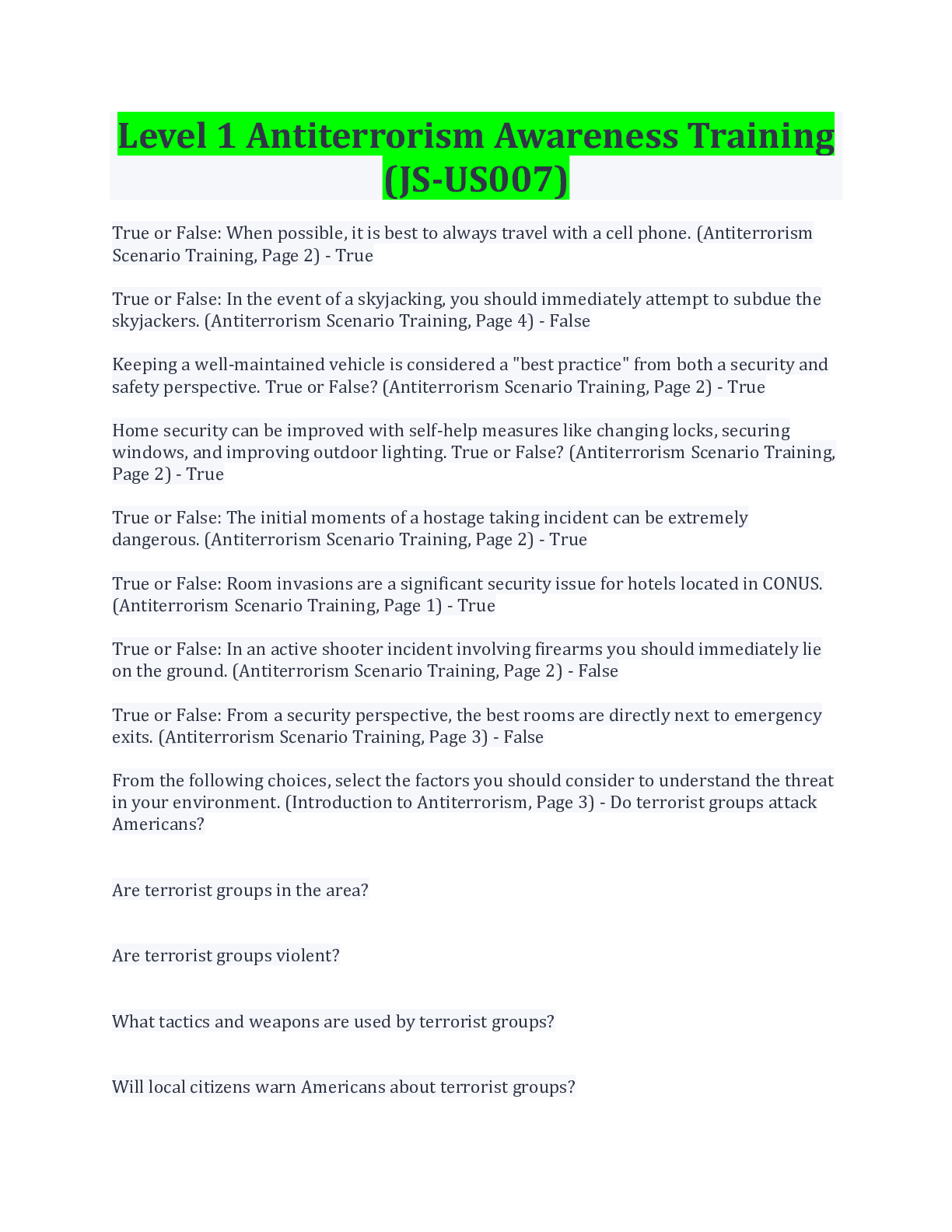
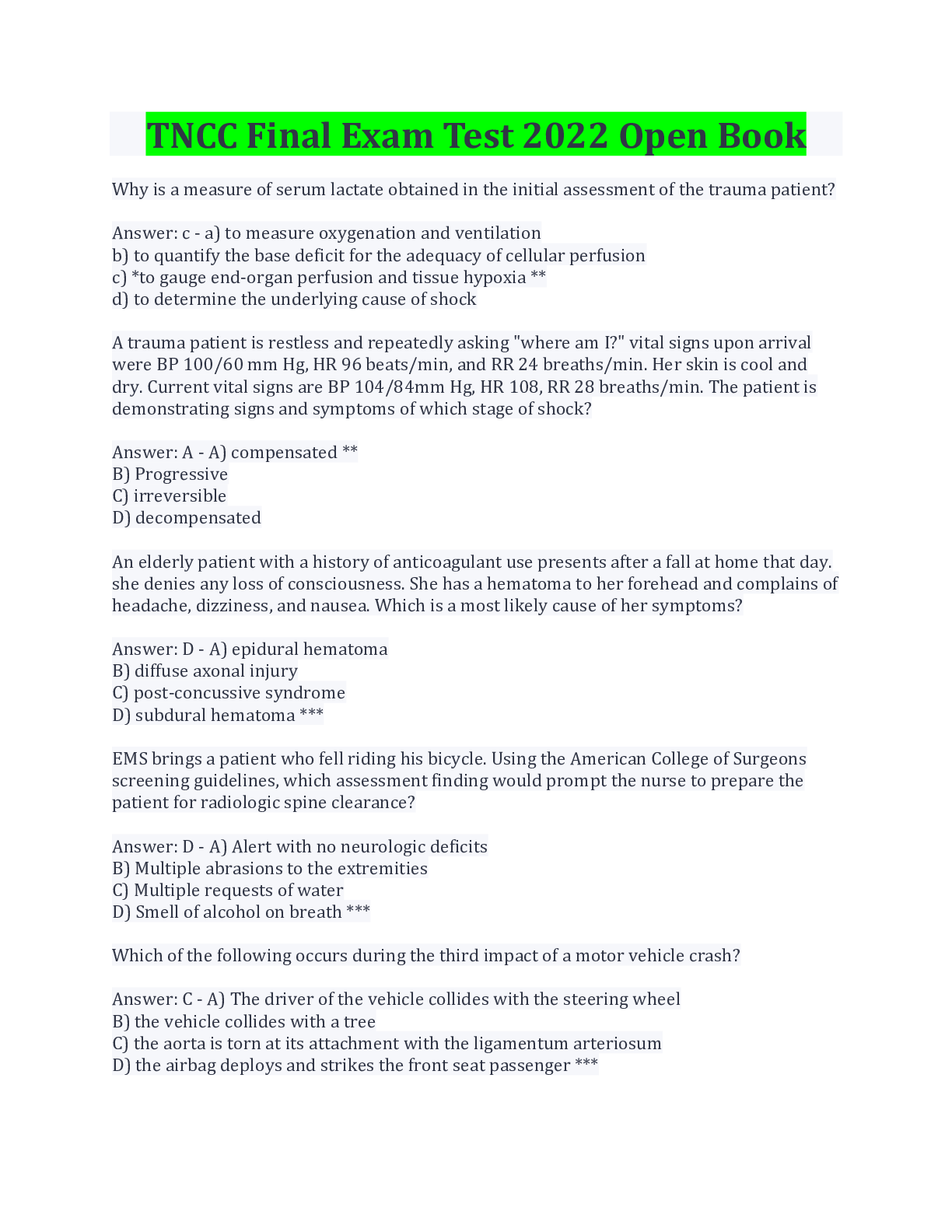
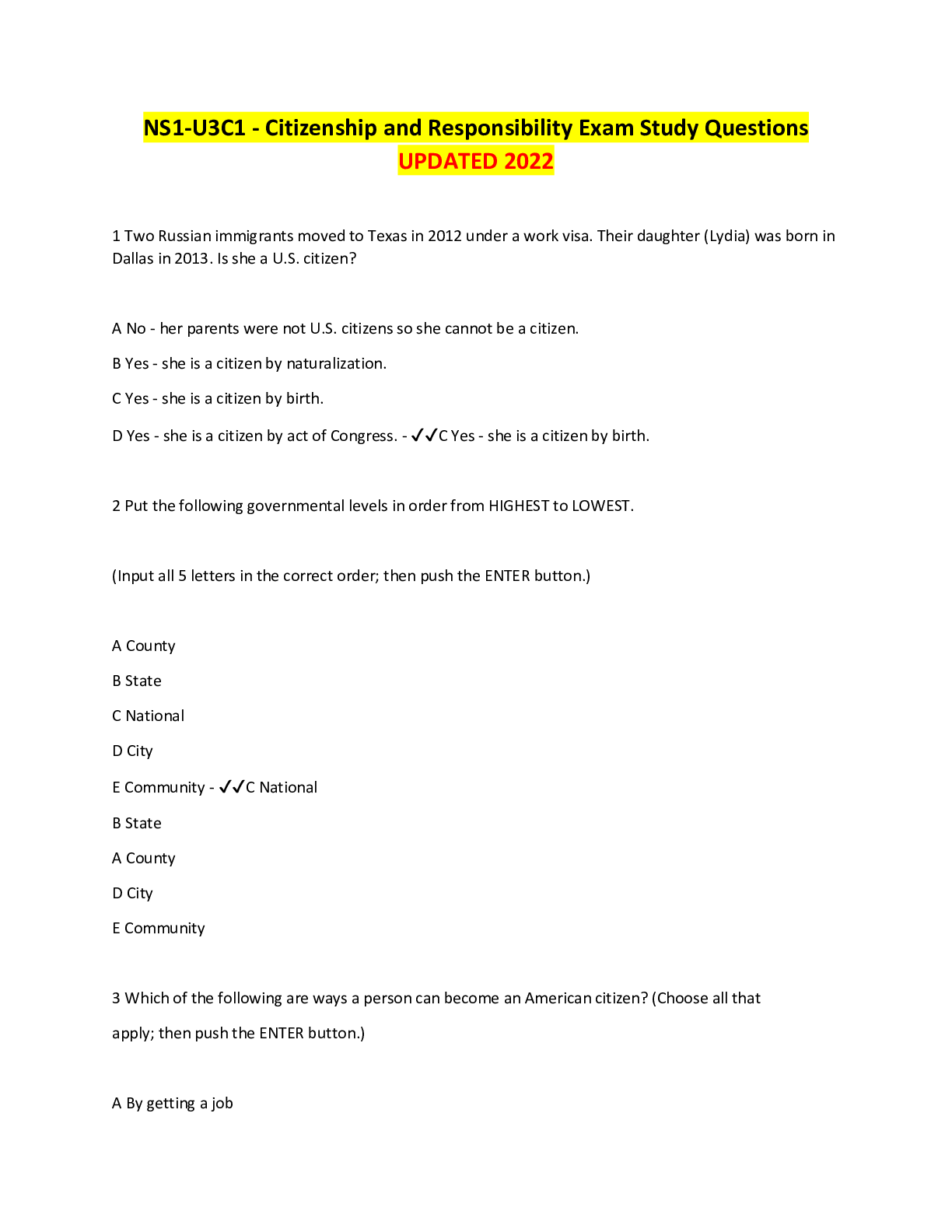

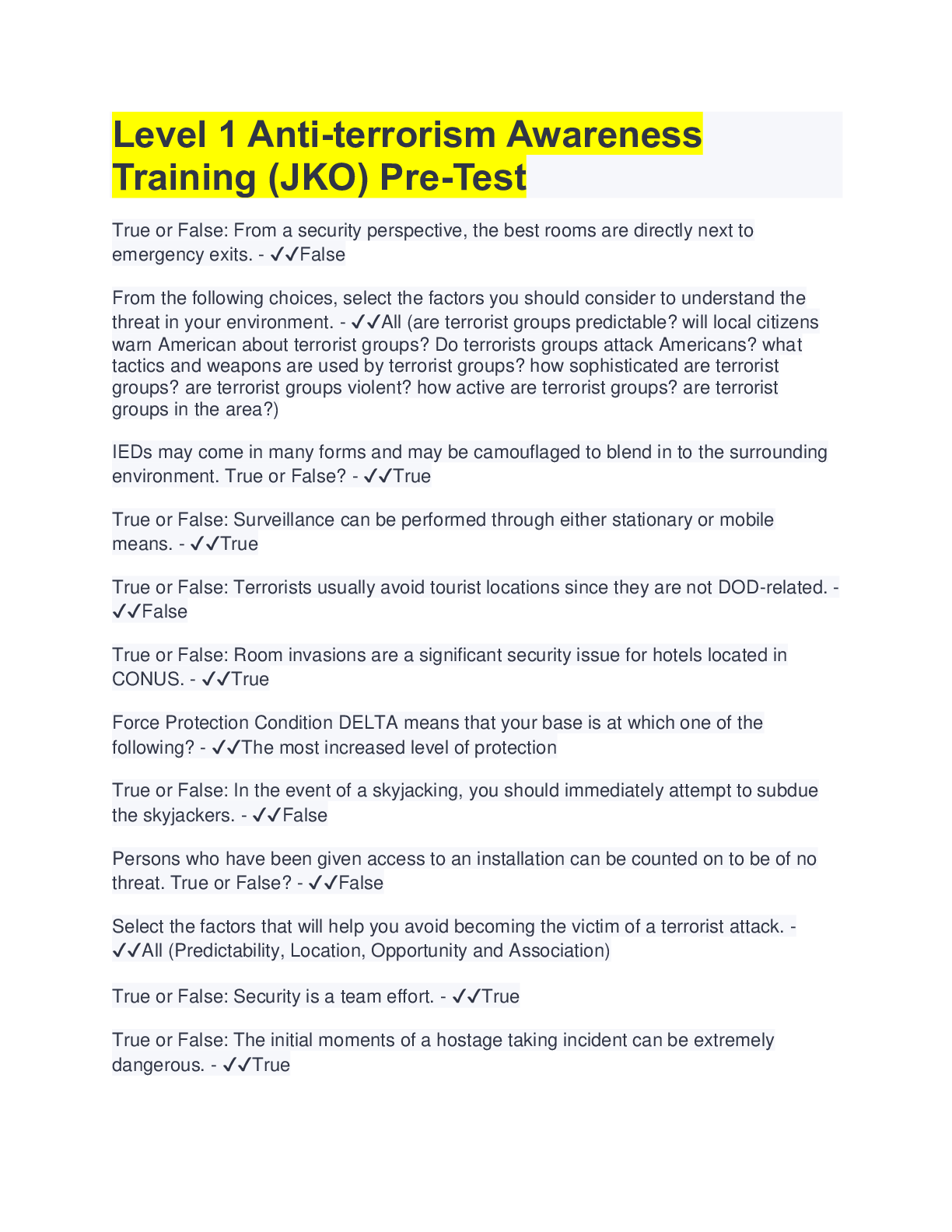
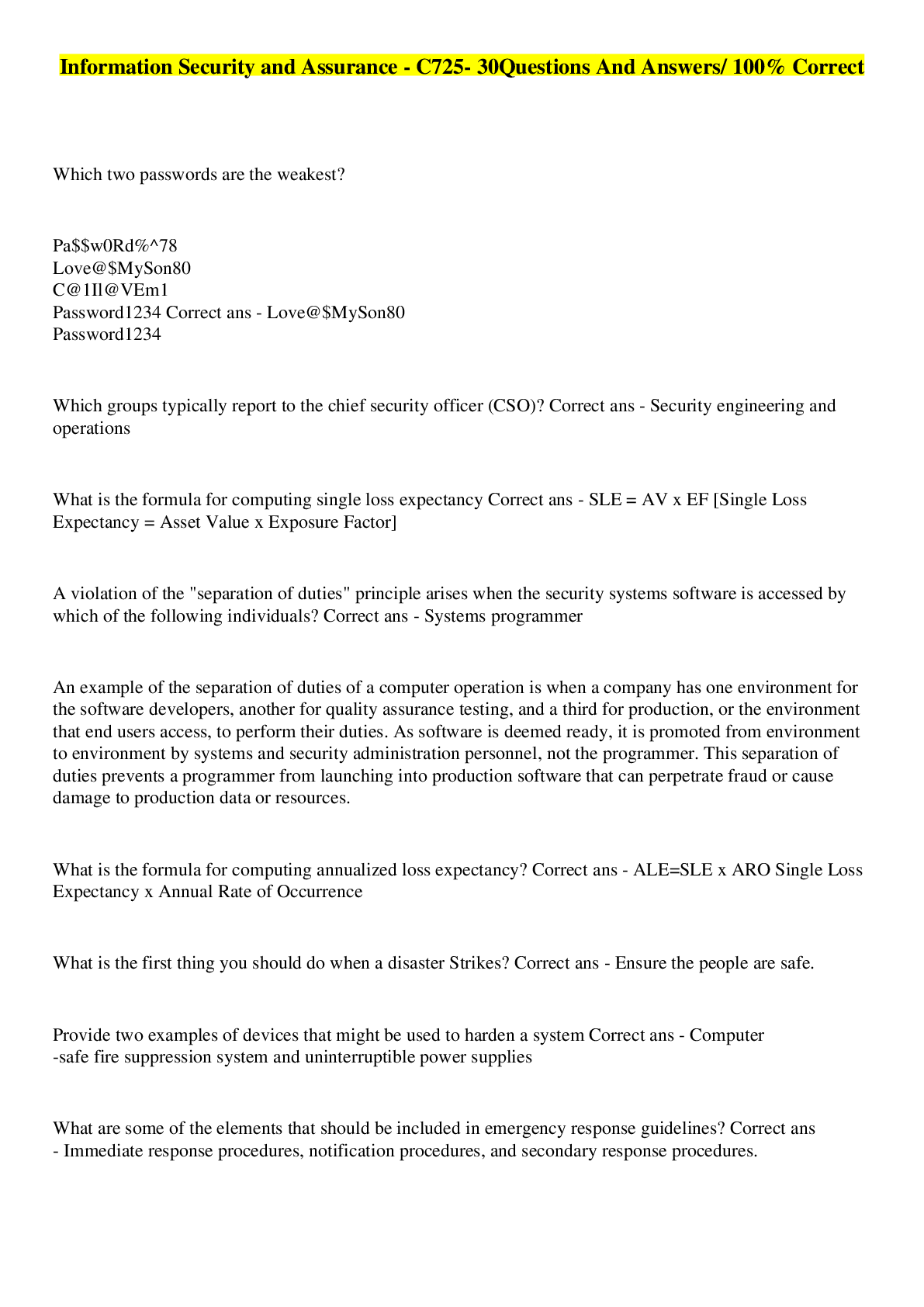
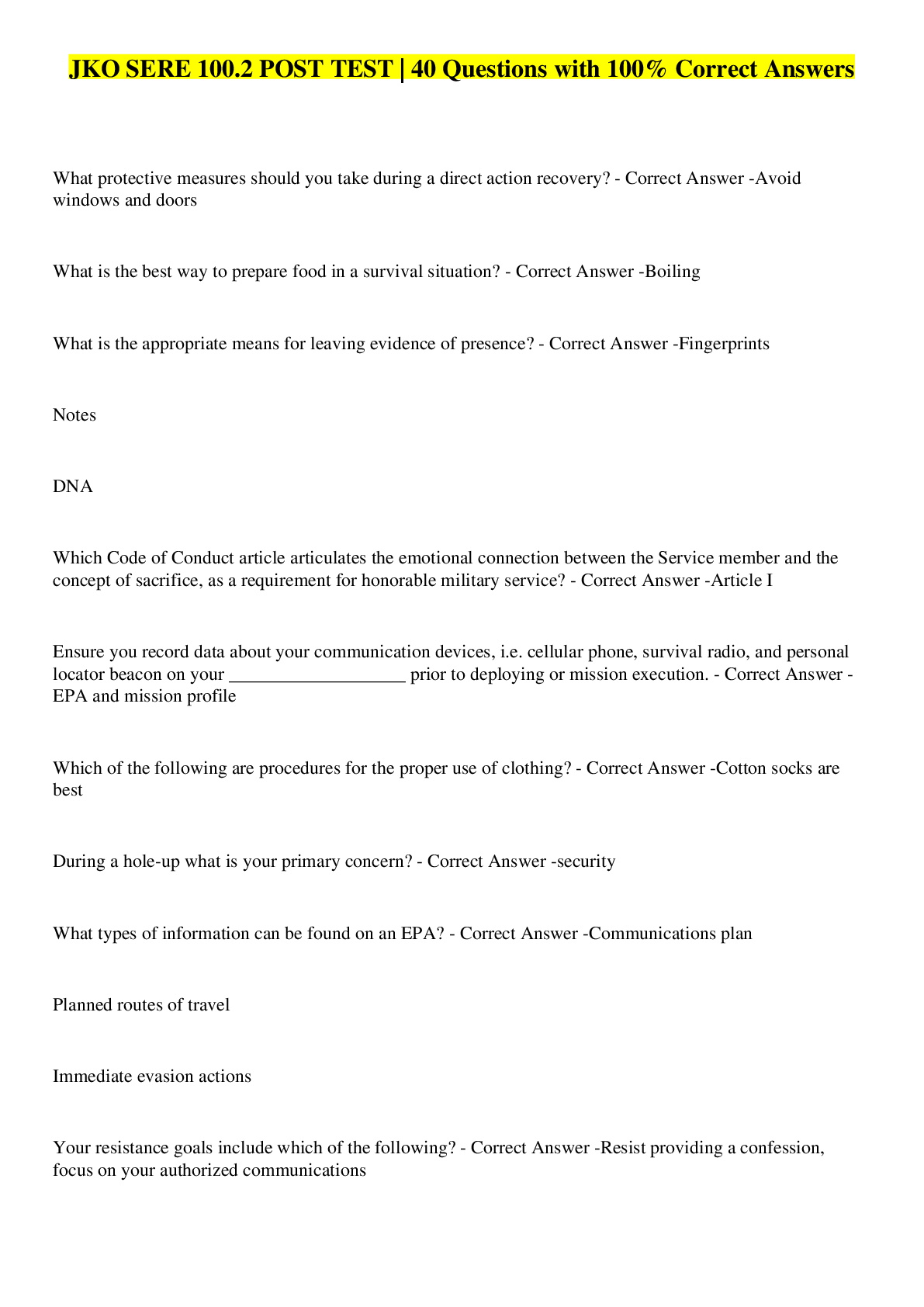

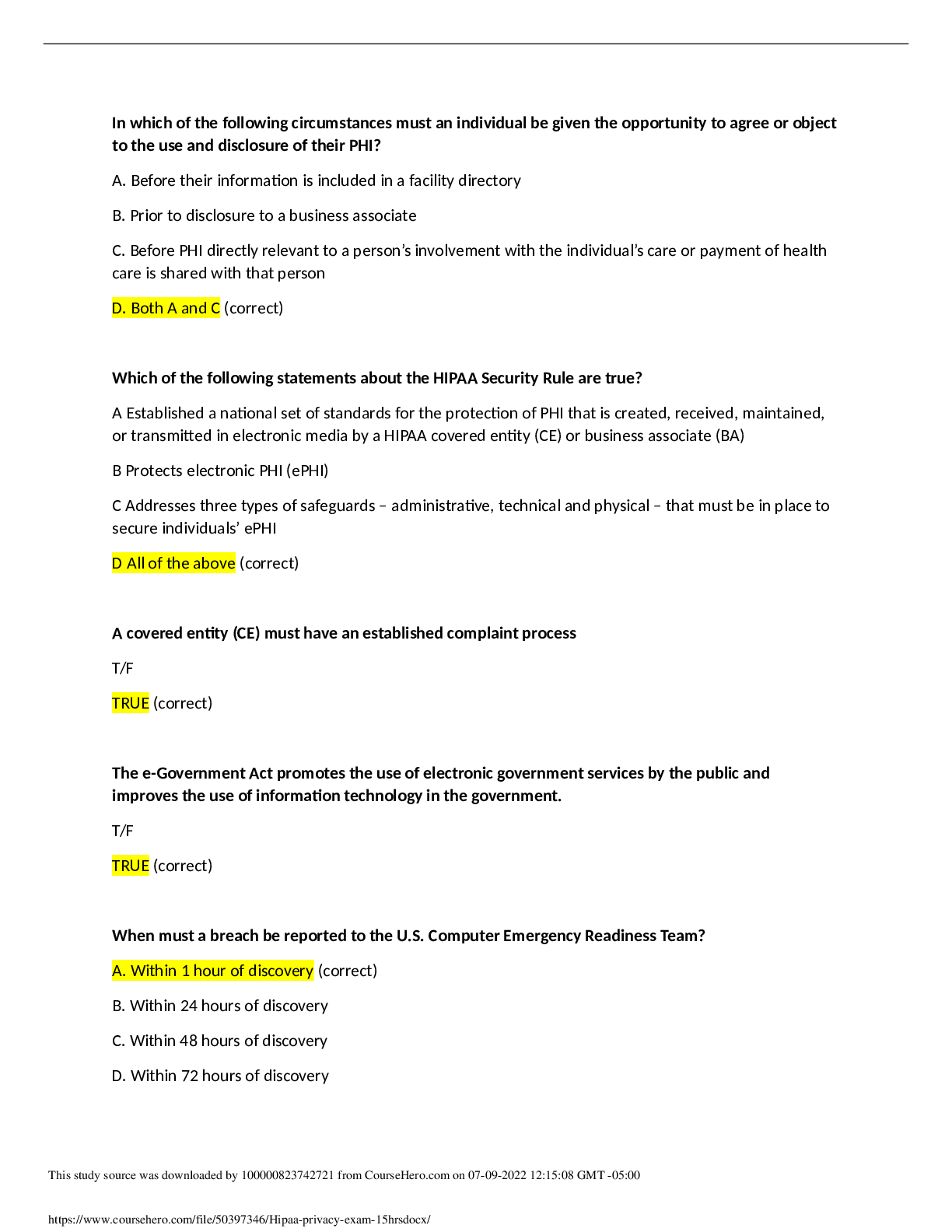
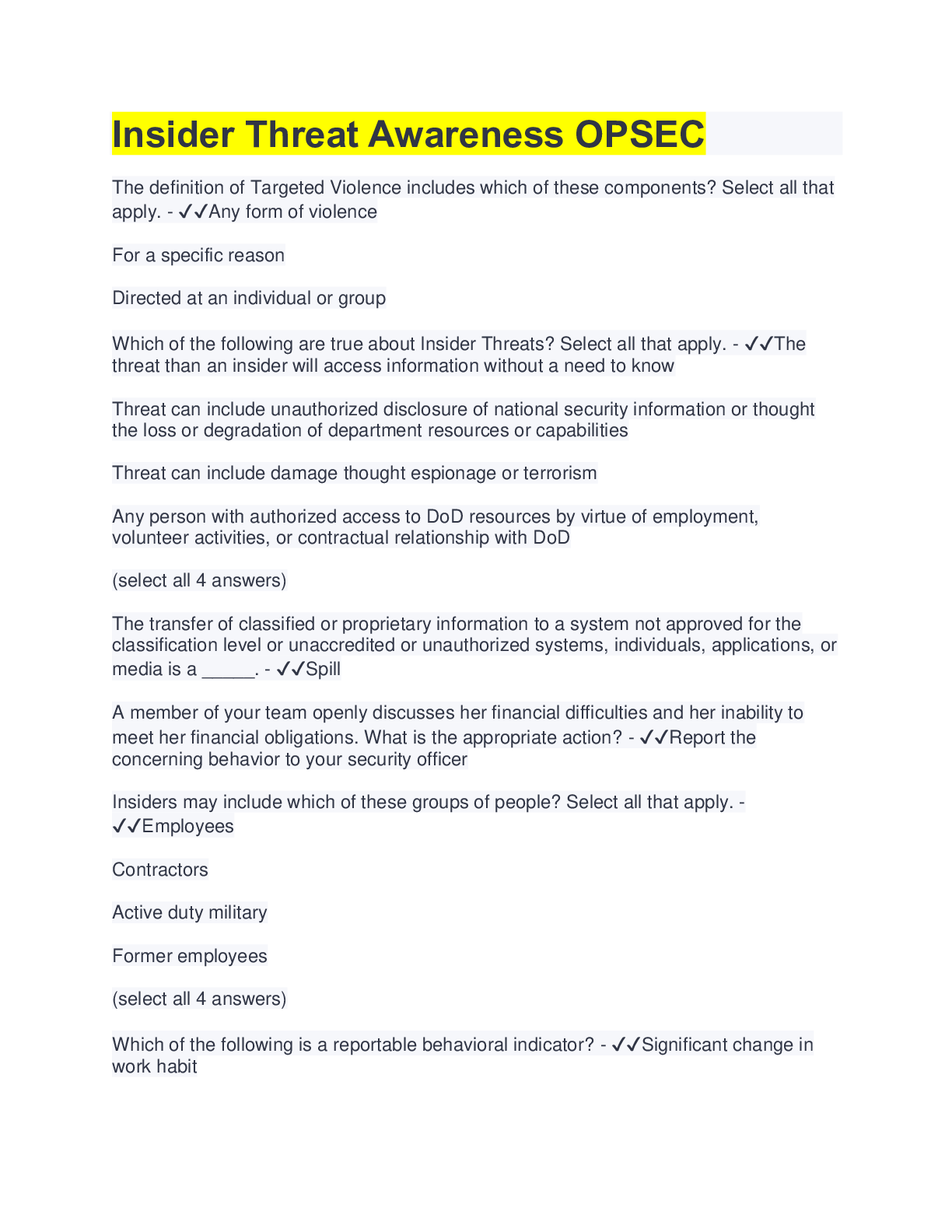

.png)
